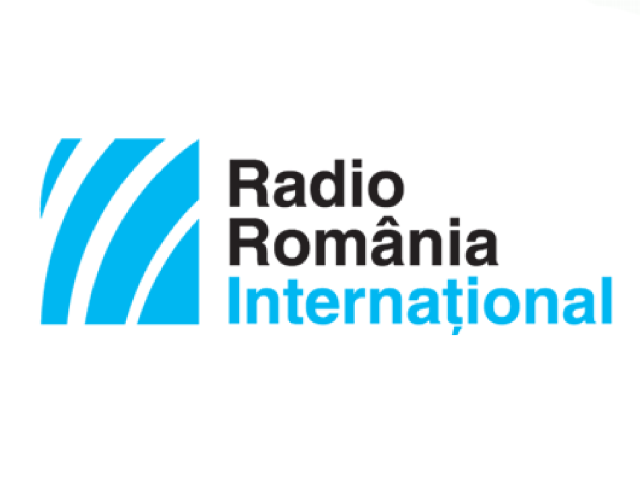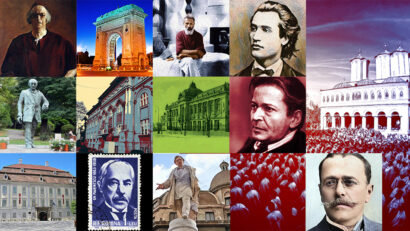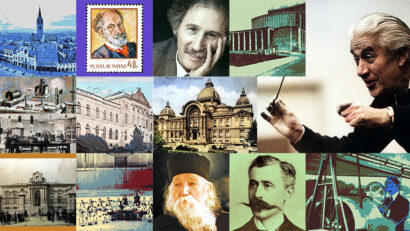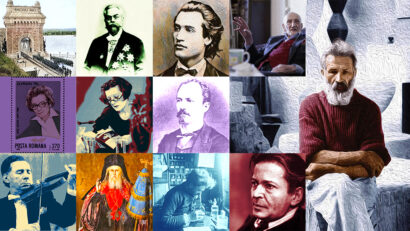Art and revolution: painter Constantin Daniel Rosenthal
Rosenthal was a central figure of the 1848 revolutionary movement

Steliu Lambru, 17.01.2021, 14:00
The painter and revolutionary Constantin Daniel
Rosenthal is the artist – symbol of the Romanian 1848 revolution in Wallachia. His
works were included in the Romanian history textbooks and many generations
studied history admiring his works. Two of his paintings are best known:
‘Romania breaking its chains on Câmpia Libertății’ from 1848 and ‘Revolutionary
Romania’ from 1850. These paintings had a powerful impact on the modern idea
regarding the creation of the Romanian state and nation.
Constantin Daniel Rosenthal, who strongly believed in
Romania’s national aspirations, and eventually became a Romanian citizen, was
actually born in 1820 in Pest, Hungary, into a family of Jewish merchants who
spoke Hungarian and German. He died at only 31, in a prison from Pest, as he
was arrested by the Austrian authorities and accused of espionage and
instigation to revolutionary activity. Constantin Daniel Rosenthal studied art
in Vienna and grew attached to radical revolutionary ideas. According to art
critics, Rosenthal came to Bucharest around 1842, for unknown reasons. It seems
that, in Vienna, he became friends with the Romanian painter Ioan Negulici,
himself a future active participant in the 1848 revolution in Bucharest. While
in Bucharest, he was regularly attending the Romanian radical revolutionary
circles represented by C.A. Rosetti’s Francophile Liberals.
Rosenthal’s most important contribution to the
Romanian revolution consists in the two aforementioned paintings. The woman who
posed for Rosenthal was the famous Mary Grant, of Scottish origin, who later
became Maria Rosetti after her marriage with C.A.Rosetti. An overwhelmingly
energetic person, Maria Rosetti personalized Romania’s beauty and determination
to build a new destiny. Dressed in an embroidered Romanian blouse, wearing a
necklace made of yellow princely coins that contrasted with her white skin,
with a head scarf made of raw silk covering her dark, shiny hair and holding a
tricolor flag in her hands, Maria Rosetti as the symbol of revolutionary
Romania was part of the epoch iconography, when a young woman embodied
political and social ideals. Art historian Adrian-Silvan Ionescu summed up
Rosenthal’s contribution to the artistic representation of Romania’s 1848
revolutionary ideas.
From the point of view of his patriotic feelings,
Rosenthal impeccably illustrated this Romanian movement by painting ‘Romania breaking
its chains on Câmpia Libertății’. Later, a lithography was made after this
painting. It is a small-size work and its lithography was popularized and
distributed to the masses at large, contributing to the dissemination of
revolutionary ideas. Afterwards, Rosenthal painted Maria Rosetti, a Scottish
woman. It is quite amusing to see that Romania was represented by a Scottish
woman, but she had a Romanian soul, being married to C.A. Rosetti.
Bucharest, like any changing city, especially in the
first half of the 19th century, was in full effervescence. A
predominantly Oriental city before 1800, without any notable public fora,
Bucharest was commonly perceived by travelers as a marginal city in terms of
living standards and quality of life. In the former Vornicei Market Square,
today the venue of the Art Collections Museum on Victory Road, a statue devoted
to Liberated Romania, designed by Constantin Daniel Rosenthal, was raised on
June 23, 1848. The Pruncul român (Romanian Infant) journal described the
statue as follows: the monument depicted a gowned woman crowned with a wreath
of laurel leaves. Her tressy locks sprawling over her shoulders, the woman
still bears her broken chains on her wrists, in one hand holding a long cross
and the scales in the other, both symbols of faith and justice. She is
trampling on the snake, representing her enemies.
In the aforementioned journal, C.A. Rosetti spoke
about the tearing down of the statue: the statue depicted Liberated Romania,
with the symbols of justice and Christianity, the cross and the scales,
standing in Vornicei Square, has been teared down under orders from Mr. Emanoil
Băleanu, who accompanied this act of vandalism with such villainous and
reprobate words that we dare not smear our paper with. The basement of the
statue was also destroyed, with no respect for the property. Adrian-Silvan
Ionescu is back on the microphone:
Few people know Rosenthal was the first public
sculptor in Romania. He created the Statue of Liberty held up in Vornicei
Square on the present-day Victory Road, a statue he built using perishable raw
materials, from plaster. The moment the interim Government fled to
Transylvania, fearing the Ottoman invasion, the statue was brought down by the
opposition. The statue stood high for no more than a few weeks. Rosenthal’s
statute was featured a year after the revolution, in 1849, in the Leipzig-based
Illustrirte Zeitung magazine, most likely drawing on one of Rosenthal’s
sketches. He was fluent in German, one of his uncles was running a
German-language magazine in Buda. He was well-connected to the European
publishers and cultural figures. He loved his art and was an avid learner of
human physiognomy and psychology, a keen observer of Romanian identity.
Moreover, he wanted to be Romanian, he considered himself Romanian, although he
didn’t speak the language. Rosenthal was a Romanian not because he obtained the
Romanian citizenship, but due to his works.
Constantin Daniel Rosenthal was the Jew, the Hungarian
and the Romanian who lived his life to the fullest according to the principles,
values and ideologies of his time, which he sought to represent as best he
could. The 1848 Revolution was undoubtedly a central moment in his life.
(translated by L. Simion & V. Palcu)






























